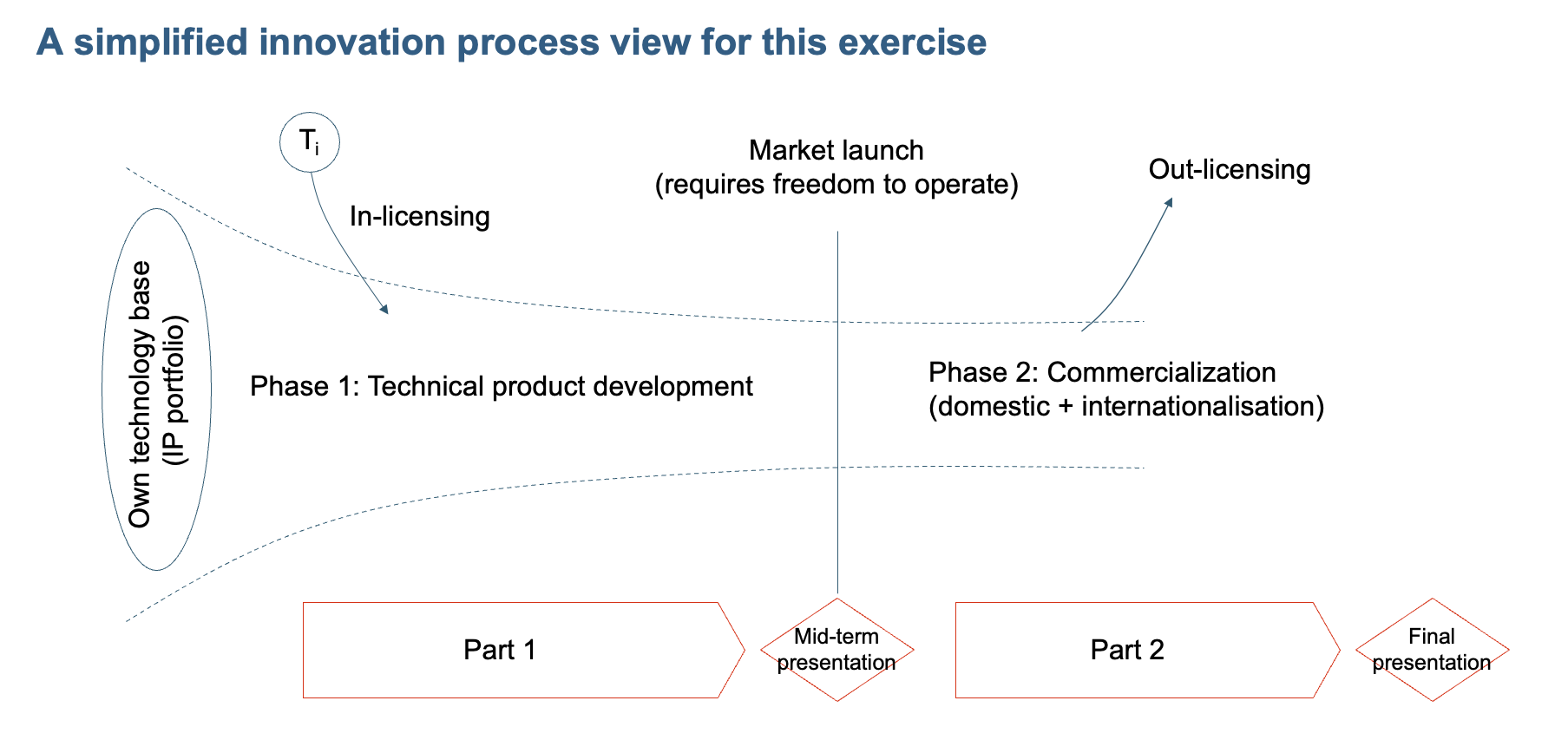This IP Analytics Teaching Exercise was developed by F. Tietze and N. Clarke with support from M. Elsen and N. Fox. It is a teaching activity designed to introduce graduate and postgraduate students—both from technical and non-technical backgrounds—to the strategic use of patent data in research, technology development, and commercialization planning. This hands-on, interactive exercise introduces participants to the practical skills required for patent search strategies, data analysis, and the interpretation of intellectual property (IP) information, which ultimately enabled them to make informed decisions in real-world innovation and commercialization contexts.
Purpose and Learning Objectives
The exercise addresses a training gap in traditional postgraduate programs, where limited attention is given to how IP data, particularly patent information, can be used to:
- Identify existing technical solutions that may be freely available or require licensing.
- Analyze technology and market trends.
- Understand the structure and meaning of patent-related data (e.g., legal status, patent families, classifications, citations).
- Evaluate commercialization strategies by identifying and assessing potential technology partners.
Through the activity, students gain insights into both the opportunities and the limitations of using patent data in strategic decision-making.
Structure of the Exercise
The exercise is structured into two main phases, each simulating a distinct phase of an innovation process. It was originally designed for the Research Development Course (RDC) that we run for our first year PhD students, but has been designed to be transferable to other departments, universities, and open online learning contexts. It is recommended that the exercise is front-loaded with an introductory lecture to patent essentials, which could be a 90min lecture by an experienced patent practitioner, such as a patent examiner, search analyst, technology transfer officer or patent attorney.
Phase 1: Technology Search and Evaluation (Pre-Market Launch)
Participants are placed in teams acting as employees of a fictional mid-sized company. The company seeks to develop a new, multi-technology product but lacks IP in a specific technology area, which has been developed and patented by others. Using patent databases (e.g., Espacenet, The Lens), students conduct:
- Systematic patent searches using keyword strategies, patent classifications, citations, and applicant data.
- Identification and comparative analysis of at least three existing technical solutions and their IP owners.
- Assessment of the legal status and freedom-to-operate implications.
- Development of a recommended solution based on data-driven evaluation.
Each group delivers an interim presentation, reflecting on their search strategy, data interpretation challenges, and key findings.
Phase 2: Commercialization Strategy and Partner Identification (Post-Market Launch)
Building on the decision made in Phase 1, the company is now ready to commercialize the product but lacks resources for internationalization. The task shifts to using patent analytics to identify and evaluate potential commercialization partners. Participants apply advanced patent analysis techniques focusing on:
- Company-level IP portfolio evaluation.
- Patent indicators including family size, citation patterns, legal status, and co-applicant networks.
- Comparative analysis of potential partners’ technological strengths and market positions.
This culminates in a final presentation, where teams present their approach for identifying and evaluating their preferred commercialization partner, detailing the analytical approach, key criteria applied, and limitations encountered during the analysis.
Teaching Kit Resources for Download
The teaching kit includes:
- Two detailed PowerPoint slide decks guiding both phases of the exercise which are available for download here: 1) Kickoff lecture slides; 2) Interim session slides.
- Examples of case-specific briefing notes and short company profiles for thematic groups working on real-world inspired sectors such as heat pumps, sustainable aviation fuel, mRNA technologies, and food packaging recycling.
The activity uses open-access databases (e.g. Espacenet, The Lens) but can also incorporate advanced analytics tools if available.
For any questions, please contact Dr Nigel Clarke or Prof Frank Tietze.
Open-Source and Digital Legacy
The teaching activity is shared openly and is designed to be easily adapted to different contexts. All materials, including instructions, slide decks, and briefing notes, is made available under a Creative Commons license, supporting dissemination by educators and institutions globally.

